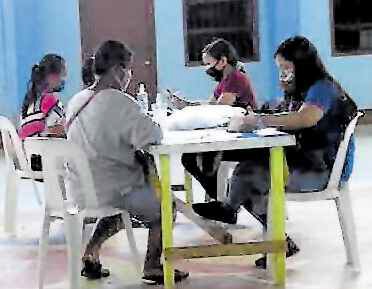(Second of two parts)
In the same March 2020 study, Microfinance Council of the Philippines (MCPI) underscored that the combined portfolio of 21 members amounting to approximately P59.7 billion is now classified as outstanding loans after declaring a payment moratorium in support of the government’s call to ensure the welfare of the clients. Also worth highlighting is that these maintain a workforce of 48,957 employees with an estimated combined monthly personnel cost of P1 billion.
To address this, the microfinance institutions (MFIs) indicated their need to access P27 billion worth of concessional loans to finance the additional emergency relief needs and livelihood recovery of their clients, as well as their compromised liquidity in order to minimize, if not prevent, job displacements. It has been more than a month since the study and it is not known how many of these MFIs have been able to raise the financing they needed. In Luzon alone, the total financing needed by MFIs is placed at around P8.5 billion.
Given the situation, the challenges appear to revolve around three key areas of concern:
The immediate welfare of MFI clients. The enhanced community quarantine strategy has significantly impacted the regular sources of household daily income of the large majority of the population who are poor. While there are relief efforts which distribute essential goods, resource exhaustion and donor fatigue are bound to set in. The transition to general community quarantine (GCQ) also means the eventual lifting of the moratorium on payments and the corresponding resumption of bills collection. These households are going to need cash to cover their living expenses.
Refinancing livelihood. To bring back daily income source, poor household members need to be able to get back to their jobs (on the assumption that they still have one). Other household members, often the women in the family, will also need to begin or restart their livelihood, which would require financing and capital infusion.
The business survival and recovery of MFIs. A key factor is the MFIs’ ability to collect the outstanding loans of clients to secure the minimum liquidity to fund their monthly operating costs. Unless this liquidity challenge is addressed, some MFIs may be forced to downsize operations and manpower. Many of these MFI employees are just as vulnerable as the clients they are serving. For MFIs that would manage to survive, they would have better chances of recovery if they are able to rebuild their loan portfolio as shown by the Supertyphoon “Yolanda” experience of MFIs.
Helping MFIs
As the country faces the important challenge of rebooting the country’s economy, the idea to pursue what analysts call a more “compassionate economy-in-crisis” is imperative—one that puts primacy on inclusive interventions, and ensures that even the most vulnerable will directly benefit. Helping MFIs is a significant step toward that aspiration through the following proposed interventions:
Restructuring exposure. In the immediate term, financial institutions already involved with MFIs may choose to restructure their existing exposures to ease the financial pressures on the latter.
Raising funds. Said entities might also explore the possibility of raising additional funds from international financing institutions to develop new loan windows that can offer more concessional rates for MFIs. Companies and their corporate foundations might also wish to make some of their funds available to rehabilitate MFI finances.
Collaborating with the government. To further stop the deterioration of credit quality, former Finance Secretary Cesar Purisima and his colleagues at think tanks Milken Institute and Asia House floated the idea of putting up a government loan guarantee fund of around P50-100 billion, which was estimated to have a multiplier effect of 20 times, to serve as a “spark plug” for the borrowing market.
Maintain Republic Act No. 10693 (Microfinance NGOs Act). To enable microfinance NGOs (nongovernmental organizations) to expand their outreach to a greater number of poor people especially in the hard-to-reach areas and implement community development programs funded by tax incentives, Aris Alip, a recognized microfinace stalwart, recommends that the government maintain the current 2 percent income tax imposed on microfinace NGOs as provided by the said law.
Strengthen the microinsurance industry. To enable Microinsurance-Mutual Benefit Associations (Mi-MBAs) to generate adequate funds and create better insurance products that will address needs of the marginalized sectors during extraordinary times, Alip recommends that tax exemption for Mi-MBAs owned by the communities should be upheld. While the industry recognizes the current efforts of the Insurance Commission, the industry’s services need to be more proactive in times of national emergencies through a calamity fund and with government policies strengthening Mi-MBAs and microinsurance companies.
Connecting and innovating. Beyond financing, MFIs will also need to find new ways of running their business. In keeping with the “new normal,” loan officers will need to transact with their clients differently, perhaps online. Technology and financial integration companies could work with MFIs and provide innovative solutions in order to leapfrog current operational limitations.
As the country paid tribute to medical front-liners, may the same recognition, effort and generosity be extended to help and reinforce the tireless and selfless work of the microfinance workforce who have made it their life’s mission to accompany the unbanked poor in their struggle to rise out of hunger and poverty. —CONTRIBUTED
Rapa Lopa is president of RestartMe Inc. Eugen Kaw is a law professor at the Ateneo Law School and executive director of the Institute for Leadership, Empowerment, and Democracy (iLEAD). Robert Sanders is a research associate of iLEAD.
